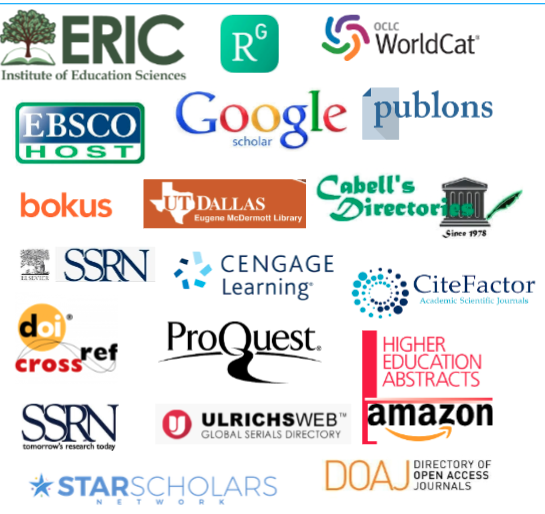Student Learning in Interdisciplinary Team-Taught Courses Centered on a “Big Idea”
DOI:
https://doi.org/10.32674/jise.v9i2.2273Keywords:
interdisciplinary instruction, team teaching, active learning, Honors programming, curricular innovationAbstract
The increased demand for more integrative curricular opportunities for post-secondary students has resulted in the exploration of new curricular approaches which center on approaching today’s ‘big ideas’ or ‘grand challenges’ from multiple disciplinary viewpoints. This article documents one such course designed to promote interdisciplinary approaches using a team teaching co-convening model at the University of Arizona’s Honors College. Results indicate that students affirm the value of interdisciplinary education and perceive this collaborative and co-instructed model as beneficial to their learning. This curricular model was found to have positive implications for the roll of collaborative classroom pedagogies for bolstering learner interest, fostering perspective-taking behaviors, and creating a classroom environment in which students perceive their intellectual contributions as valued.
Downloads
References
Augsburg, T., Chitewere, T., & Gagnon, P. (2013). Starting with worldviews: A five-step
preparatory approach to integrative interdisciplinary learning. Issues in Interdisciplinary Studies.
Blumberg, P. (2019). Making Learning-Centered Teaching Work: Practical Strategies for
Implementation. Stylus Publishing, LLC.
Carson, R. (1962). Silent spring. Houghton Mifflin Harcourt.
De Greef, L., Post, G., Vink, C., & Wenting, L. (2017). Designing international education: a
practical handbook for university teachers. Amsterdam University Press.
Dezure, D. (2017). Interdisciplinary Pedagogies in Higher Education. In Frodeman, R., Klein, J.
T., & Pacheco, R. C. D. S. (Eds.). (2017). The Oxford handbook of interdisciplinarity. Oxford University Press.
Gombrich, C., & Hogan, M. (2016). Interdisciplinarity and the student voice. In The Oxford
Handbook of Interdisciplinarity.
Hart Research Associates. (2016). Recent Trends in General Education Design, Learning
Outcomes, and Teaching Approaches: Key Findings from a Survey among Administrators at AAC&U Member Institutions: United States, 2016
Holley, K. A. (2009). Understanding Interdisciplinary Challenges and Opportunities in Higher
Education. ASHE Higher Education Report, 35(2), 1-131.
Juris, S. J., Mueller, A., Willermet, C., Drake, E., Upadhaya, S., & Chhetri, P. (2014). Assessing
interdisciplinary learning and student activism in a Water issues course. Journal of the Scholarship of Teaching and Learning, 111-132.
Luckie, D. B., Bellon, R., & Sweeder, R. D. (2012). The BRAID: Experiments in Stitching
Together Disciplines at a Big Ten University. Journal of STEM Education: Innovations & Research, 13(2).
Looft, R., & Myers, M. J. (2019). Exploring Faculty and Student Reflections on Collaborative
Teaching in the Honors Seminar Classroom. Journal of Interdisciplinary Studies in Education, 8(1), 140-157.
Maxwell, J. A. (20123). Qualitative research design: An interactive approach (Vol. 41). Sage
publications.
National Academies of Sciences, Engineering, and Medicine. (2018a). How people learn II:
Learners, contexts, and cultures. National Academies Press.
National Academies of Sciences, Engineering, and Medicine (2018b). The Integration of the
Humanities and Arts with Sciences, Engineering, and Medicine in Higher Education: Branches from the Same Tree. Washington, DC: The National Academies Press.
Newell, W. H. (2010). Educating for a Complex World: Integrative Learning and
Interdisciplinary Studies. Liberal Education, 96(4), 6-11.
Newell, W. H., & Luckie, D. B. (2013). Pedagogy for interdisciplinary habits of the
mind. Insights on interdisciplinary teaching and learning. White Paper. Michigan State University East Lansing, 7-14.
Noy, S., Patrick, R., Capetola, T., & McBurnie, J. (2017). Inspiration from the classroom: A
mixed method case study of interdisciplinary sustainability learning in higher education. Australian Journal of Environmental Education, 33(2), 97-118.
Pascarella, E. T., & Terenzini, P. T. (2005). How College Affects Students: A Third Decade of
Research. Volume 2. Jossey-Bass, An Imprint of Wiley. 10475 Crosspoint Blvd, Indianapolis, IN 46256.
Repko, A. F., Szostak, R., & Buchberger, M. P. (2017). Introduction to interdisciplinary studies.
Sage Publications.
Rives-East, D., & Lima, O. K. (2013). Designing interdisciplinary science/humanities courses:
Challenges and solutions. College Teaching, 61(3), 100-106.
Self, J. A., & Baek, J. S. (2017). Interdisciplinarity in design education: understanding the
undergraduate student experience. International Journal of Technology and Design Education, 27(3), 459-480.
Szasz, M. (2017). Interdisciplinary Teaching of Theatre and Human Rights in Honors. Honors in
Practice, 13, 55-69.
Taylor, S. J., Bogdan, R., & DeVault, M. (2015). Introduction to qualitative research methods: A
guidebook and resource (4th Ed.). Hoboken, NJ: Wiley.
University of Arizona Strategic Plan (2018). 16 November 2018. Retrieved from University oF
Arizona website.
Weimer, M. (2002). Learner-centered teaching: Five key changes to practice. John Wiley &
Sons.
Additional Files
Published
Issue
Section
License
Copyright (c) 2021 Journal of Interdisciplinary Studies in Education

This work is licensed under a Creative Commons Attribution-NonCommercial-NoDerivatives 4.0 International License.







